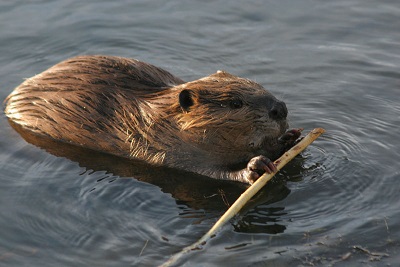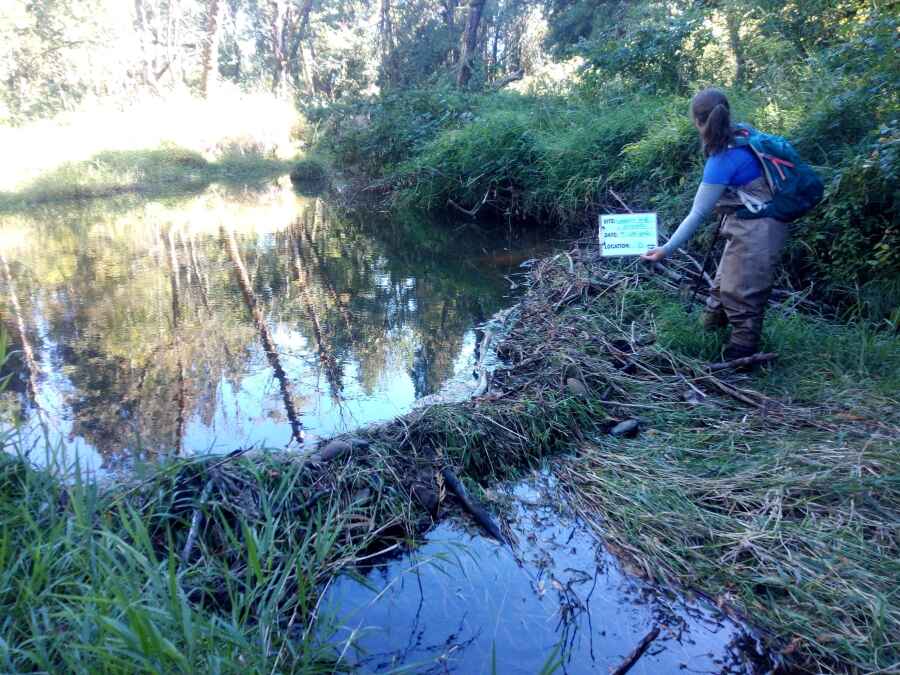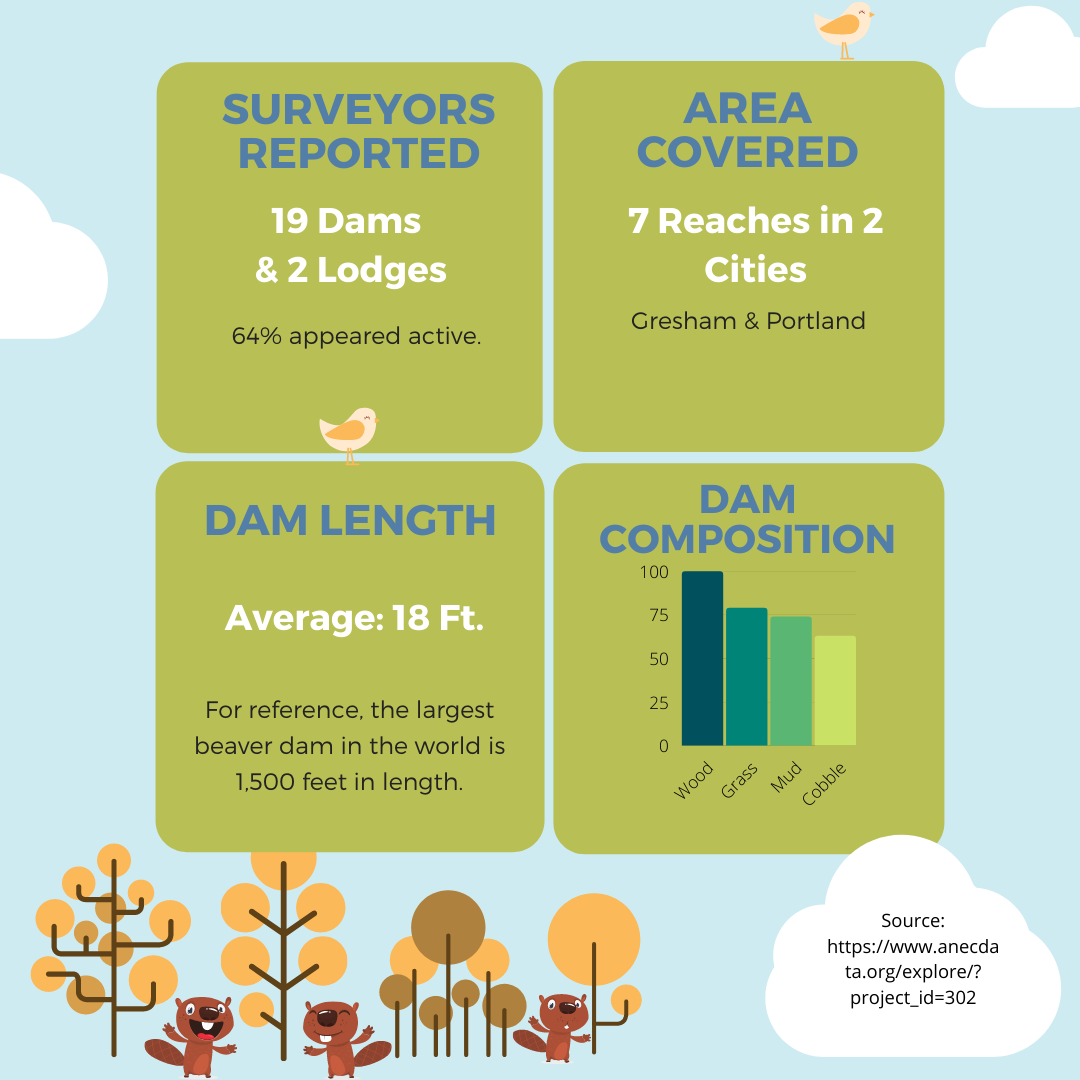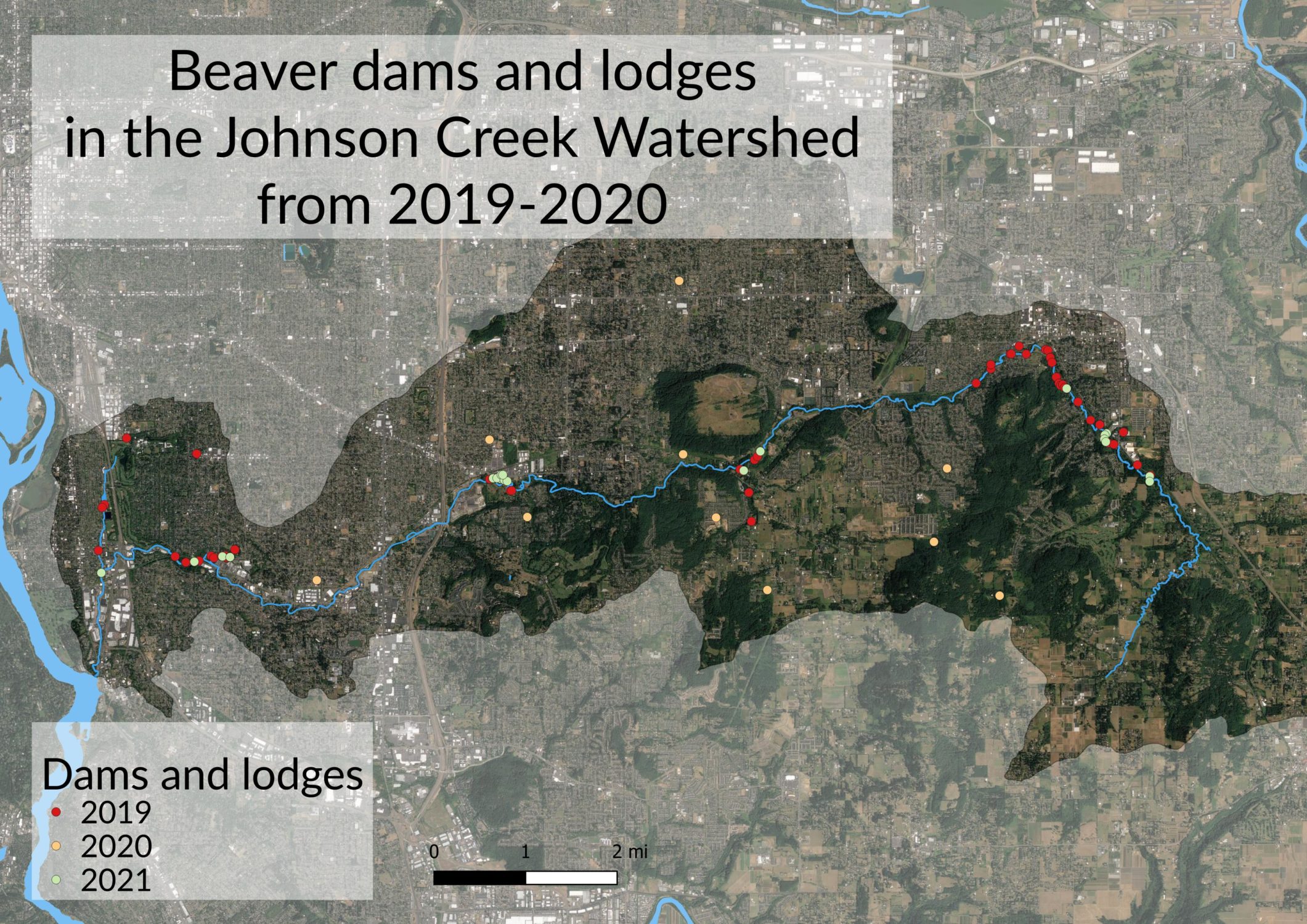Beavers are incredibly important to streams and wetlands. Not content to simply find an ecosystem, beavers go a step further than most animals and make their own ecosystem. These “ecosystem engineers” create the ponds where they live by building dams which transform swift-flowing creeks to tranquil ponds. In the process, they also create habitat for dozens of other plants and animals, from willows to willow flycatchers. While humans sometimes find the localized flooding beaver dams produce to be a nuisance, in the long run beavers stabilize river flow. Beaver ponds absorb water during floods and hold water during drought, reducing the negative affects of both extreme rain and extreme heat.

It’s no surprise, then, that the Johnson Creek Watershed Council takes beavers very seriously. Since 2016, JCWC has surveyed reaches of Johnson Creek and its tributaries in late summer, looking for beaver dams and lodges. These surveys would not be possible without the help of many dedicated volunteers, who walk through the creek in waders seeking signs that beavers are present. Unfortunately, safety concerns surrounding COVID-19 forced JCWC to conduct most of the surveys without volunteers for the past two years, although we received enormous help from youth with The Blueprint Foundation.

Despite such a small number of surveyors (down from a pre-pandemic high of about a dozen), we surveyed seven river reaches this year and found 19 beaver dams and 2 lodges in the watershed. It’s well-known that beavers build their dams with logs and sticks, but many of the dams we found contained other materials, too. About a quarter of the dams also contained grass or other vegetation (79%) and mud (74%), and two-thirds of the dams (63%) incorporated rocks.

Most of the dams we found were quite narrow: the average dam was only 18.4 feet long. For comparison, volunteers participating in The Nature Conservancy’s community science program, who surveyed mostly on the west side of the Willamette River or on the coast, found dams with an average length of 27.7 feet–a whole 10 feet wider. We can’t know for sure why the dams in Johnson Creek are so narrow, but it’s likely related to the relatively narrow width of the creek itself.

We share the data we collect about beaver dam locations and construction with our government and academic partners, who use them to make important decisions regarding management and to conduct scientific research. Arun Pallathadka, a PhD candidate at Portland State University, used some of our community science data in his talk, “Understanding beaver habitats using SETS framework in Johnson Creek, Portland,” which he gave at our annual Science Symposium last month. We hope that next summer we will once again be able to include volunteers in our beaver surveys, and that you can join us in Johnson Creek as we search for these amazing animals.
